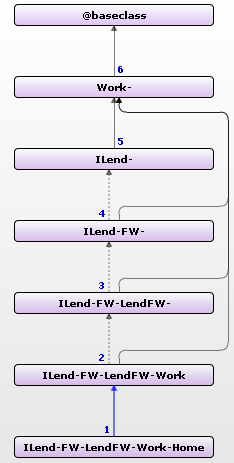The Where Am I? icon allows the developer to?
A rule's placement in the class structure defines the scope of its...
A flow can have more than one start flow shape?
Using our current LendFW application as an example, the best place to...
The more ________ a class, the more resuable it is?
These provide role-based user interface based on operator ID?
Section rules are found in which Rule Category?
When a flow rule is in draft mode, the developer cannot add additional...
After running the Application Accelerator, you should expect to see...
A section rule cannot be referenced within another section rule.
The Harness rule type is found under the ____________ rule category?
A flow action that updates an assignment, but does NOT complete the...
The first thing to consider in your design is:
Which Smart shape would be used to represent the UpdateStatus activity...
Portals cannot be customized.
Which of the following is not a Rule Type?
A local list is defined for a property. Which HTML Property rule...
Pattern inheritance is required in PRPC.
Router shapes are connected to what shape?
This image shows what?
With respect to Data Classes, It is considered a best practice to...
Which method instantiates a new page in the clipboard?
A class rule?
The 'dot reference' for the following property example,...
In this image, OrderEntry, representents what?
It is considered a best practice to always use an Else connector with...
Which statement is true about flow action likelihoods?
During the creation of the Application Profile, you should be asking...
The data page corresponding to an open work item (seen in...
Every class, except @baseclass, must define a directed...
Which rule type is considered more business user friendly because of...
A template, or description, used to create a specific instance of work...
When creating a Property rule, the Quick Create feature cannot be used...
In what class would you expect to find the out of the box activity...
In PRPC, the Organizational Hierarchy requires:
The Short Description field of this rule type is used to create the...
In order to define a work type, the This Class field on the class rule...
A system architect can leverage properties created in a data class,...
Which two statements are true about harnesses and sections? (Choose...
Which rule is referenced by Router, Notify, and Utility shapes?
All of the same Smart shapes are available to the developer whether...
Sections rules are created as type:
Which statement is true about Fork and Decision shapes?
A decision shape automatically adds the connectors based on the...
In a screen flow, the flow action is referenced in the ____________...
What is the transition in an activity used for?
Which two of the following are options in Rules Inspector?
The Model rule type is found under the ________ rule category?
When considering rule resolution and class inheritance, it is...
Which standard Harness rule allows users to select a flow action,...
Which three are characteristics of a concrete class? (Choose three.)
A requirement specification states that if a test score is between 91...
The New harness is referenced on the Process tab of what rule type to...
All of the the following are true of the Class Group, except?
When developing and debugging, you may use the Clipboard tool to...
















